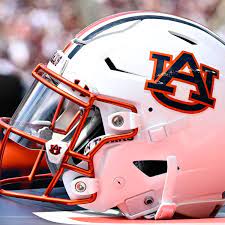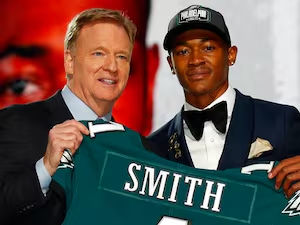
Auburn Cornerback Reportedly Plans to Enter Transfer Portal Amid Program Turnover
Auburn football could be facing a significant loss in its defensive backfield as one of its cornerbacks is reportedly planning to enter the NCAA transfer portal. As the Tigers continue to navigate a pivotal offseason under head coach Hugh Freeze, player movement is expected, but the departure of a key defensive contributor could sting for a unit that has leaned on depth and talent in the secondary.
According to multiple reports, the cornerback—whose name is being withheld pending official confirmation—has informed coaches of his intent to explore opportunities elsewhere. Though not yet officially in the portal, his decision appears imminent, and it adds to an evolving narrative surrounding Auburn’s roster management heading into Freeze’s second season at the helm.
The timing of the reported move is significant, coming just after spring practice concluded on The Plains. Coaches often use the post-spring period to evaluate positional battles and make final adjustments before the fall, and players similarly take stock of their roles. The portal window, which re-opened in April, provides athletes with a chance to seek more favorable opportunities—be it more playing time, a different scheme fit, or simply a fresh start.
For Auburn, the loss of a scholarship cornerback creates an immediate depth concern. The Tigers have invested heavily in improving their defensive backfield in recent recruiting classes and through the portal, but continuity and experience are crucial, particularly in the SEC where offenses can be unforgiving. Auburn’s defense, coordinated by Ron Roberts, relies on smart, physical corner play to help anchor its aggressive approach. A player’s departure now leaves a hole in what was shaping up to be one of the team’s more competitive units.
The cornerback in question was expected to be in the rotation or at least pushing for more reps in 2025. He may not have been a locked-in starter, but insiders believed he was trending upward based on his spring performance. That growth, however, appears to have come in a crowded room. Auburn has recruited well at the position, including former high-profile signees and transfer additions who have pushed the competition to a new level.
That kind of depth is both a blessing and a curse. While it sharpens iron during practice and gives coaches more flexibility, it also makes it harder for talented players to crack the two-deep. In today’s college football landscape, where players have the ability to move freely and immediately play elsewhere, depth often leads to attrition. The portal giveth and it taketh away.
Freeze and his staff have already seen a number of players exit the program since the end of the 2024 season, a natural part of year-over-year roster churn. Still, each departure offers a glimpse into how the internal depth chart is shaking out and what players are thinking about their futures. For a program still building its identity under a new regime, these decisions are worth monitoring.
While the portal can cause short-term headaches, it can also provide clarity. Freeze has emphasized culture, accountability, and competition as key tenets of his program. Players who feel they aren’t in the best position to contribute or who don’t align with the staff’s vision may ultimately be better off elsewhere. That’s not a knock on talent; it’s a reflection of how dynamic and individualized the modern college football experience has become.
What this means for Auburn’s defense is still unfolding. The Tigers brought in several defensive backs during the last portal cycle and signed a pair of highly-rated cornerbacks in the 2025 class. Young players like Kayin Lee and Colton Hood have continued to show growth, and returning veterans provide some stability. But with every departure, the pressure on younger players increases, and the margin for error shrinks.
Auburn fans saw glimpses of the defensive potential last season, especially in games where the Tigers were able to generate pressure and play tight coverage. While the unit had its share of inconsistencies, particularly against elite competition, the blueprint is clear: a fast, physical, and disciplined secondary that can go toe-to-toe with the SEC’s best. Every player counts in that equation, especially one with starting potential.
From a broader view, this transfer story also underscores how much the portal continues to reshape college football. No program is immune—not even those with tradition-rich histories like Auburn. Players are more empowered than ever to take control of their careers, and programs must constantly adjust. Coaches not only have to recruit high school prospects, but also re-recruit their current rosters. Culture-building is no longer just a preseason talking point; it’s an everyday priority.
For the cornerback in question, a fresh start may be what’s best. There will undoubtedly be suitors across the country looking for an experienced SEC defensive back, particularly one with upside and time left on the eligibility clock. His next stop could offer more snaps, a clearer role, or a defensive scheme that better suits his skills. That’s the reality of today’s game: sometimes fit matters more than pedigree.
As for Auburn, there is no time to sulk. The Tigers are heading into a critical summer, and Freeze will need to rally his squad with a firm understanding of who’s all in. The defensive backfield may lose a piece, but the blueprint remains. Auburn is still actively engaged in the portal, seeking immediate contributors who can fill gaps and elevate the overall talent level. This departure might open up a scholarship spot for another addition before fall camp begins.
Freeze has made it clear that competing in the SEC starts with toughness and accountability. While losing a promising cornerback certainly stings, it’s also an opportunity for others to rise. The portal era rewards adaptability. Auburn must now shift its attention to those still on the roster and those who might soon arrive. If the Tigers hope to return to prominence in the SEC, every roster decision—whether by addition or subtraction—must be viewed through the lens of progress.
Auburn’s schedule in 2025 will offer no easing into the season. Early matchups against key SEC rivals will put the secondary to the test quickly. While there is still time to adjust, the runway is shrinking. Defensive coordinator Ron Roberts will need to accelerate the development of his younger players and ensure that communication and consistency are bedrocks of the defense moving forward.
For fans, this latest twist is just part of the new normal. Roster fluidity is here to stay. The key is ensuring that each change, even the painful ones, contributes to the larger goal of sustained success. Auburn’s coaches have a plan—they’ve shown that in both their recruiting and their philosophical approach. But plans must be flexible. If the Tigers can effectively pivot from this reported departure, the team can still emerge stronger.
The offseason always brings surprises, and while this cornerback’s potential transfer may have come as a shock to some, it’s also a chance to evaluate how far the program has come—and how far it still needs to go. Auburn football is a work in progress, with Freeze leading a rebuild that demands buy-in, toughness, and patience. The departure of a talented defender won’t derail that progress, but it does raise important questions about development, opportunity, and alignment.
In the end, the transfer portal remains a double-edged sword. It creates challenges, yes, but also opportunities—for both the player and the program. Auburn may lose a cornerback, but the door is open for a new face to emerge, perhaps one who’s been waiting in the wings or one who hasn’t even arrived on campus yet. The Tigers must now adjust, refocus, and press forward—because the SEC waits for no one.




